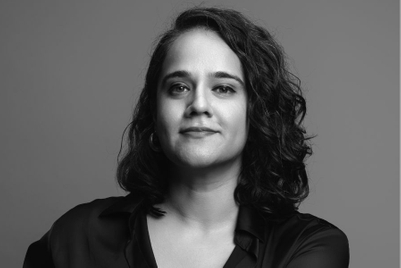
UTV’s youth channel Bindass will co-author the Indian edition of the book, Generation Einstein, along with its author Jeroen Boschma. The initiative is a part of Bindass’ ‘Open Source’ philosophy, which aims to get a better understanding of young India by knowledge sharing. The book will release at the end of April 2012, and will be published by Dutch publisher AW Bruna.
Boschma, who is currently the chairman of Gadfly The Increation Company, wrote the book Generation Einstein, smarter, faster and socially more aware in 2006 in The Netherlands, and it has since been released in Spain and The United States as well. Boschma came up with the term ‘Generation Einstein’ for today’s youngsters because he was looking for a name that captured their positive characteristics, such as being astute enough to look through advertising. He also says that like Albert Einstein, the youth today are self-actualisers, on top of Maslow’s pyramid. .
The book stresses upon the significance of the youth as an important part of the market, and aims to decode this generation and help marketers reach out to them.
We asked Boschma and Keith Alphonso, business head, UTV Bindass, about the book and what suggestions it has for marketers today:
CI: What can you tell us about the book?
Jeroen Boshcma (JB): At the time of writing the first edition of Generation Einstein, I had my own company that helped brands to connect to youngsters. I thought why not write a book with everything I know, or think I know. Surprisingly, it became a huge success. I liked it when the question came up to do a version in India, but I also said I need people in India who work daily with this generation and also who know how to interpret research from India. We started working on it a year ago. I’m really proud of what we’ve done, because it isn’t an English version of the book with some Indian examples and one mention of Gandhi to make it an Indian version.
CI: What is some of the advice the book suggests for marketers?
JB: Marketing is no more about how can I get closer to youngsters or how can I act a little stupid so that youngsters like me. The whole mindshift we need is, “How can I make youngsters invite me into their lives as a brand or a company?” It would be safe for me to say that that mindshift is stronger here than it is in Europe.
You need a very good product today, else it won’t work. The whole ‘reason to believe’ way of thinking won’t work anymore. Instead think about ‘reason to be’ and why the brand is here.
One of the biggest mistakes you can make as a marketer is to think that you know how it is now, because you were young once. Growing up in the 1980s in Europe was a time of punk ‘tough on the street’ aggression. Everything was extreme at that time. Today, creative 30- or 40-year olds think it has to be about aggression. But youngsters are saying, “Act normal.” One of the biggest failures in Europe was a campaign that said, “Fight your parents.” Youngsters looked at it and said, “Fight my parents? No, I will invite my parents.”
Friendship is so key today. Marketers should think whether they would use a marketing strategy for their best friend, and if they won’t, they shouldn’t use it for their consumers. The other and most important thing is love. Your fans should love you. And to communicate to them, marketers should love their brands.
CI: What are some of the insights in the book about this generation?
Keith Alphonso (KA): Global aspirations are here to stay now. There was a time, when I was young, when we had to ask cousins from Dubai to bring Levi’s jeans for us. Today, there is no difference between Nike Plus in India and Nike Plus abroad. Global brand managers devise strategies on a perception of an economy of deprivation, where we actually have an economy of surplus aspiration. The Indian youngster has become a very savvy customer; you can’t fool him.
JB: It isn’t just about using the Internet. Youngsters trust their intuition, they know if someone isn’t speaking the truth. They use the right side of their brains, because the computer is a social machine, requiring them to be creative all the time. They understand advertising a lot better than we do. They understand social media a lot better than we do. This generation is also the Maslow-5 generation, because they’re on top of the Maslow pyramid. They’re also all about friendship, and hence they don’t mind if their parents like that brand too.
CI: Would you say the brands mentioned in the book like Tata Docomo, Bindass and Virgin Mobiles are the ones who’ve got it right or are they also on a learning curve?
KA: I’ll give you the Bindass example. We did this serial last year called ‘Meri Toh Lag Gayi Naukri’, which was a sitcom on your first job. To promote the show, which was launching just after the exams got over, we went across colleges during exams and offered kids the chance to get free photocopies just by showing their ID cards. At the bottom of every page was a line ‘Bindass copy kar’. It was a huge hit. Then we had ‘destress agents’ where at the end of every exam when students came out of the hall, we would give them boxes of sweets, saying, “Don’t worry, you’ll get a job.” But when the serial went on air, we stopped the marketing campaign. Jeroen said, “Why did you stop?” He offers pointers of how an innovative idea could have been done better or a good idea wasn’t leveraged for long enough, when you could have actually driven it to a far bigger goal rather than as a tactical promotion.
CI: Which brands are getting it right, according to you?
JB: There is a question in that about a brand that does it as a brand (along with the mistakes, because when youngsters love you, they will forgive you). There are a lot of examples of campaigns that work. There is a jeans brand in Turkey called Mavi that is proud to be from Turkey (Turkey used to supply material to other global brands).
KA: It’s essential to establish the difference between getting your campaign right and getting your brand essence right. A campaign is a temporary manifestation of your brand essence. Airtel did a fabulous job with ‘Har ek friend zaroori hota hai’, because they captured something that is very relevant today, which is friendship. What was beautiful is the way they took that and imbued it into everything they did with the brand – their tariff plans, events, and user-generated content strategy.


.jpg&h=334&w=500&q=100&v=20250320&c=1)
.jpg&h=334&w=500&q=100&v=20250320&c=1)
.jpg&h=334&w=500&q=100&v=20250320&c=1)


.jpg&h=334&w=500&q=100&v=20250320&c=1)








.jpg&h=268&w=401&q=100&v=20250320&c=1)



